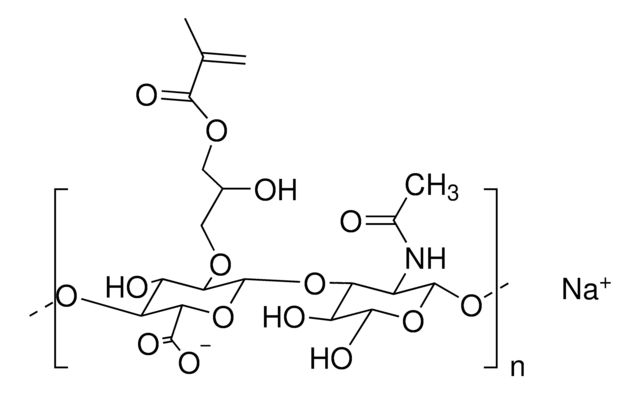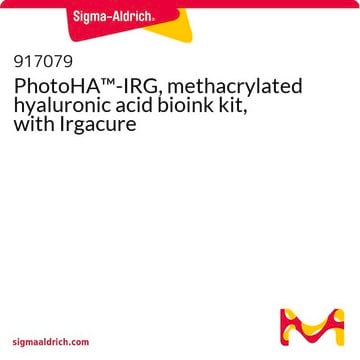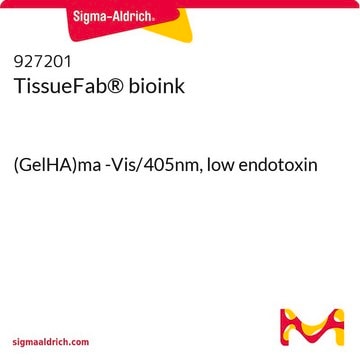916471
PhotoHA™ -LAP, methacrylated hyaluronic acid bioink kit, with LAP
Synonym(s):
3D Bioprinting, Bioink, HAMA, Hyaluronic acid
Sign Into View Organizational & Contract Pricing
All Photos(1)
About This Item
UNSPSC Code:
12352201
NACRES:
NA.23
Recommended Products
description
Methacrylated collagen:
Degree of methacrylation: ≥45-65%
Quality Level
sterility
sterile; sterile-filtered
storage temp.
−20°C
Application
PhotoHA™ -LAP bioink kit consists of methacrylated hyaluronic acid (HAMA) and LAP photoinitiator. Hyaluronic acid is the most abundant glycosaminoglycan in the body being an important component of several tissues throughout the body. While it is abundant in extracellular matrices, hyaluronic acid also contributes to tissue hydrodynamics, movement and proliferation of cells, and participates in a number of cell surface receptor interactions. The photoinitiator consists of LAP to be formulated in 1X cell culture media or PBS, which allows blue light photocrosslinking of the printed structure at 405 nm. PhotoHA™ -LAP provides native-like 3D HA gels, and the final gel stiffness can be customized by changing HA concentrations and crosslinking.
Legal Information
PhotoHA is a trademark of Advanced BioMatrix, Inc.
Storage Class Code
11 - Combustible Solids
WGK
WGK 3
Certificates of Analysis (COA)
Search for Certificates of Analysis (COA) by entering the products Lot/Batch Number. Lot and Batch Numbers can be found on a product’s label following the words ‘Lot’ or ‘Batch’.
Already Own This Product?
Find documentation for the products that you have recently purchased in the Document Library.
Sudhir Khetan et al.
Cryobiology, 90, 83-88 (2019-08-06)
While significant progress has been made in directing the behavior of cells encapsulated within three-dimensional (3D) covalently crosslinked hydrogels, the capacity of these materials to support in situ cryopreservation of cells directly within the gels has not been assessed. Here
Michelle T Poldervaart et al.
PloS one, 12(6), e0177628-e0177628 (2017-06-07)
In bone regenerative medicine there is a need for suitable bone substitutes. Hydrogels have excellent biocompatible and biodegradable characteristics, but their visco-elastic properties limit their applicability, especially with respect to 3D bioprinting. In this study, we modified the naturally occurring
Our team of scientists has experience in all areas of research including Life Science, Material Science, Chemical Synthesis, Chromatography, Analytical and many others.
Contact Technical Service






